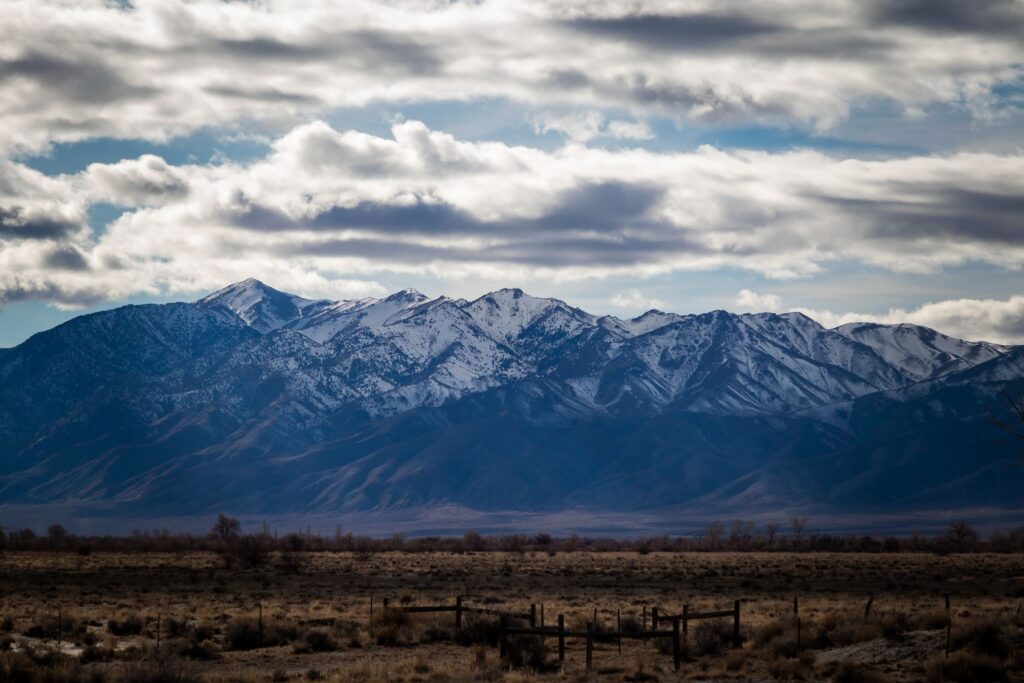Despite third dry year, water managers say Reno-Sparks supply is prepared for drought

Good morning, and welcome to the Indy Environment newsletter.
As always, we want to hear from readers. Let us know what you’re seeing on the ground and how policies are affecting you. Email me with any tips or suggestions at daniel@thenvindy.com.
To get this newsletter in your inbox, subscribe here.
Three back-to-back dry years have crunched water supplies for many cities and farms across Nevada and throughout the West. The past two decades, according to a report released earlier this year, represent the most extreme drought in the last 1,200 years. As the West continues to warm, officials expect more uncertainty, driven largely by changes in precipitation and aridity.
Headlines paint a sobering picture. But officials at the Truckee Meadows Water Authority, the regional water purveyor for the Reno-Sparks area, struck a different message during a water update last week: We have analyzed the numbers, and we are prepared for prolonged drought.
“We’re actually ending up having a better year than last year, which all things considered, is a good place to be,” Bill Hauck, a senior hydrologist for the agency, said in an interview this week.
Even in Nevada, the driest state in the nation, the situation varies from watershed to watershed, region to region. Although there are similarities — often less water to go around than there are rights — the Truckee River is different from the Colorado River is different from the Walker River is different from the Humboldt River, when it comes to the particulars.
Reno, Sparks and Washoe County (all served by the water authority) are located toward the end of the Truckee River, and they divert water that largely originated as snowpack in the mountains above Lake Tahoe, many miles upstream. The region is not unfamiliar with the uncertainties that come with relying on mountain snowpack, Hauck said, noting historic swings between dry and wet years. And he said the agency has worked to prepare its supply to withstand those swings.
In large part, the agency has done that through storage in upstream reservoirs. Hauck said the Truckee River Operating Agreement, which went into effect in 2015, gave the water authority more flexibility to store water — and build up drought reserves — in reservoirs. In addition, he said the municipal utility has a diversified portfolio, with rights to pump groundwater.
“We are very confident that we have water supplies to meet projected demand, decades into the future,” Hauck said. “We are really in a unique position here with being situated on the Eastern Sierra [with] all the different sources of supply we have on hand to meet customer demand.”
The snowpack this year has mirrored the weather whiplash that the region often sees: December started out strong, what Hauck called a “banner month.” Then came the start of 2022, when January, February and March registered as the driest on record since snow-monitoring equipment was first installed in the 1980s. Over the last few weeks, what some have called an “awesome April,” the snowpack has improved slightly. But the end of the year total still came in below average.
“[April] really improved the outlook for us,” Hauck said. “We were looking at normal Truckee River flows only through the first or second week of September. But now this is going to push things out into October,” which will help the agency meet peak customer demand in the summer.
The water agency serves about 440,000 people in a region that is experiencing rapid growth.
Hauck said the water authority has factored growth into its planning efforts, noting that the local area’s per-capita demand has actually decreased in recent years, mirroring trends across much of the West (municipalities have seen water use drop as appliances have grown more efficient and water agencies have put in place scheduling for outdoor irrigation). Still, per-capita demand sits at about 175 gallons per customer per day, which is higher than other Western cities.
Kyle Roerink, who directs the Great Basin Water Network, said Western water utilities should be considering a broad range of tools to address the effects of a changing climate. Utilities, he said, should look at their resource plans, infrastructure and how to lower water consumption.
“It's not cut and dry,” he said. “It's not that there is no water. It's that managing the supply in the future is going to get more difficult. And what are you doing today?”
Roerink argued that the Reno-Sparks water provider could do more to encourage conservation, similar to some of the measures taken in Southern Nevada, where water officials have encouraged ordinance changes and required the removal of purely decorative turf.
“We're not seeing anything like what you're seeing in Southern Nevada, which is concerning, especially when you have population growth outpacing the estimates that they have used in past analyses,” said Roerink, whose group is currently looking at Truckee River water use.
Hauck noted that the water authority has irrigation schedules, as outdoor water use is one of the most significant drivers of water consumption, especially during the summer months. Although the agency is watching what other water providers are doing across the West, Hauck said he believes customers are successfully decreasing their per-capita water use.
As for why the agency has not adopted more stringent conservation measures, Hauck said that structurally, Reno-Sparks is in a different position than Las Vegas, which recycles nearly all of the water that it does not use and can effectively rededicate conserved water to development.
“We cannot reuse it,” he said, citing the different laws and rules in place that govern the Truckee River. “We can’t take that bucket of water that we save from ‘cash for grass’ programs and turn around and use it to serve new subdivisions like Las Vegas can. We feel that customers are already doing a fantastic job and we’re just not there yet… We’re not in a dire situation.”
Still, the agency acknowledged the uncertainties that climate change could bring. Hauck said the water authority has included climate science with multiple future emission scenarios in its long-term resource plan, which has a 20-year planning horizon and is updated every five years.
But the uncertainties are not only about the quantity of water. They are also tied to the timing of when and how water falls as precipitation. In the Lake Tahoe Basin, research suggests that with a warming climate more water will fall as rain, rather than snow, Hauck noted. That’s an issue, and one that creates uncertainty, because snow acts as a natural reservoir to store water during the season.
Today’s storage reservoirs, however, were not typically built or operated to capture rain. Hauck said the water authority is studying the issue through a federal grant that it received in 2019.
The water authority, he said, is the “lead agency to study and develop ways to reoperate federally owned and operated reservoirs upstream to address future potential impacts of climate change.”
Here’s what else I’m watching this week:

New realities for Colorado River water users:
- The seven basin states that rely on the Colorado River wrote a letter to the Department of Interior on Friday, supporting an emergency action to keep water in Lake Powell.
- I wrote this week about Las Vegas’ decision to turn on the pumps for its third intake, infrastructure designed to allow Southern Nevada to continue retrieving Colorado River water, even when the reservoir reaches extremely low levels and other states can no longer access their water. I’m planning to write a little more about what this means in the coming days (Twitter thread to come). But if you’re interested in learning more about Las Vegas’ water supply — the myths and realities — check out this conversation that I recorded with the producers at CityCast Las Vegas, a new (and excellent!) podcast.
- Southern California, which imports a portion of its water supply from the Colorado River, imposed unprecedented cuts to water use. “Southern California officials on Tuesday took the unprecedented step of declaring a water shortage emergency and ordering outdoor usage be restricted to just one day a week for about 6 million people in parts of Los Angeles, Ventura and San Bernardino counties,” the L.A. Times’ Ian James writes.
- An important perspective on the Colorado River shortage from Audubon’s Jennifer Pitt. She writes: “Moving water does not address the fundamental challenge in the Colorado River Basin and does not offer any real certainty for water users or the river itself in any corner of the basin. Colorado River water demands exceed supplies.”
- A nature-based solution for quagga mussels? The answers could have something to do with their DNA. A fascinating story from The Arizona Republic’s Lindsey Botts.
For her last story with The Nevada Independent, Jazmin Orozco Rodriguez wrote about the Fallon Paiute Shoshone Tribe’s efforts to designate a national monument in Dixie Valley, an area under increasing pressure from development and a proposed military base expansion. (P.S. - Jazmin is now working for Kaiser Health News in Elko. Send her your pitches and ideas!)
“The Environmental Protection Agency for the first time is proposing a measure that would force four Western states to reduce their harmful emissions because of the impact they’re having on air quality in neighboring states — including Colorado,” Noelle Phillips reported in The Denver Post earlier this week. “If approved, Utah, Wyoming and Nevada would be required to reduce greenhouse gas emissions from power plants and industrial manufacturing sites, while California would need to cut emissions from certain industries.”
Gov. Steve Sisolak’s Office of Energy announced tax breaks approved in 2021 for renewable energy companies.The five companies, according to a press release, are expected to invest roughly $1.6 billion dollars into the economy, much of that coming from a single project, Gemini Solar, in Southern Nevada. Here is an excerpt from the announcement last week:
- “Dry Lake Solar (Clark County) was approved in January 2021 to receive $36,478,866 in abatements and will invest an anticipated $343,349,803 in Nevada, provide 195 construction jobs and two operational jobs.
- Gemini Solar (Clark County) was approved in February 2021 to receive $121,088,850 in abatements and will invest an anticipated $1,011,884,025 in Nevada, provide 422 construction jobs and six operational jobs.
- Citadel Solar (Storey County) was approved in May 2021 to receive $13,039,568 in abatements and will invest an anticipated $61,251,812 in Nevada, provide 96 construction jobs and six operational jobs.
- North Valley Power Plant (Washoe County) was approved in October 2021 to receive $10,934,530 in abatements and will invest an anticipated $123,974,682 in Nevada, provide 38 construction jobs and 13 operational jobs.
- Boulder Flats Solar (Clark County) was approved in November 2021 to receive $7,725,848 in abatements and will invest an anticipated $42,685,048 in Nevada, provide 102 construction jobs and two operational jobs.”
“It’s the only way to keep me from passing out.” Worth reading this op-ed piece about the effects of extreme heat on immigrant communities by Make the Road Nevada’s Jose Rivera.
Something to watch: “The battery storage company Yotta Energy raised an additional $3.5 million in Series A finance and announced a nearly $2 million Defense Department award for a microgrid project at [the Nellis Air Force Base],” Axios’s Ben Geman reported yesterday.
